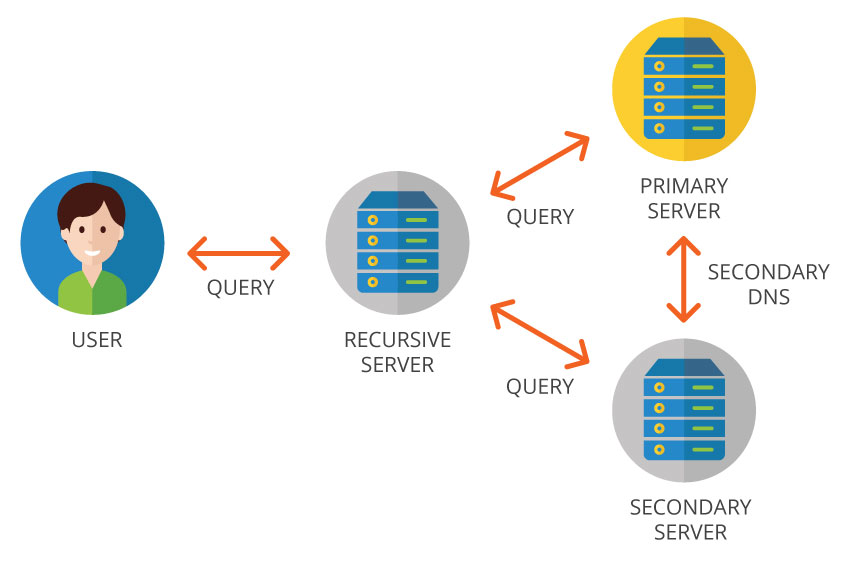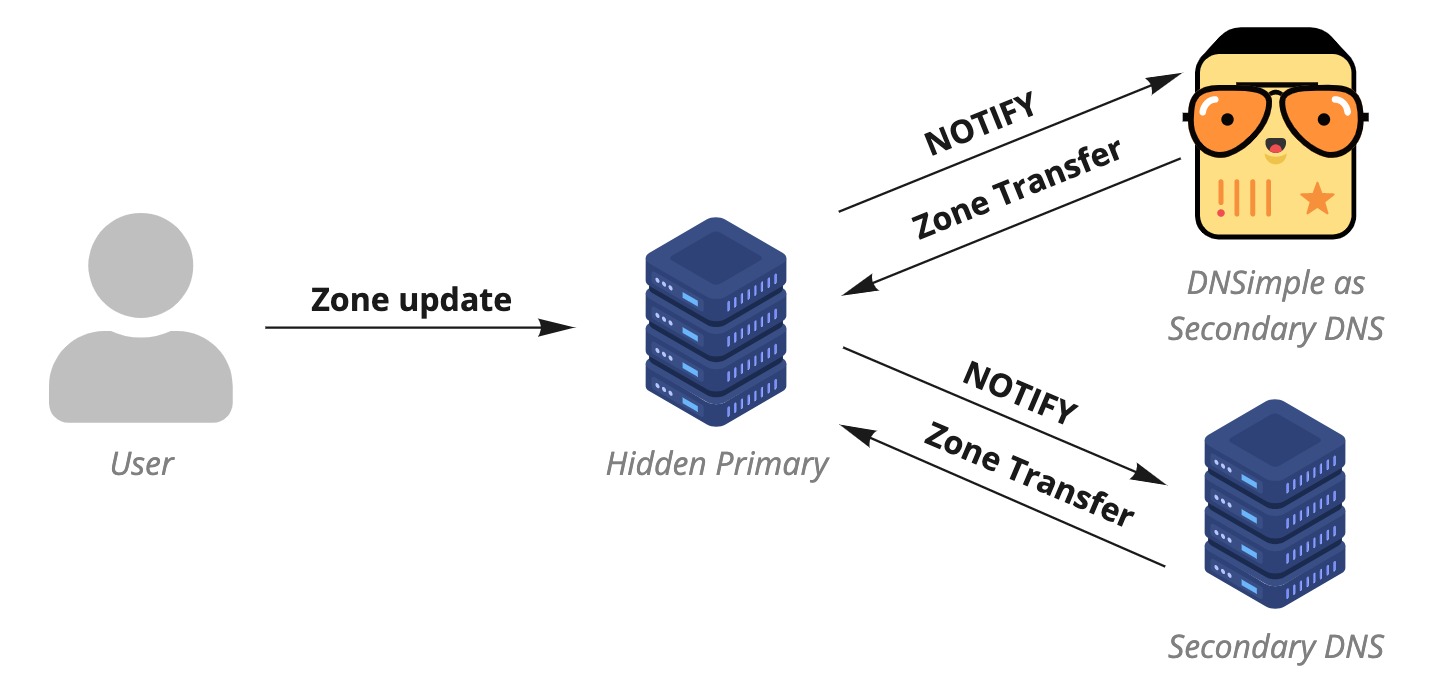Primary and secondary nameservers

Primary and secondary nameservers (or DNS servers) are terms used to describe the hierarchy and redundancy within the Domain Name System (DNS) infrastructure, which translates domain names (like example.com) into IP addresses (like 192.0.2.1) that computers use to communicate over the internet.
- Primary Nameserver:
- The primary nameserver (also known as the master nameserver) is the authoritative DNS server that holds the original master copies of the DNS zone files for a domain.
- It is the server where administrators directly configure and update DNS records for the domain.
- When a query is made for a domain’s DNS information, the primary nameserver is the first to respond with the authoritative answer.

Primary and secondary nameservers
- Secondary Nameserver:
- The secondary nameserver (also known as the slave nameserver) is a backup DNS server that mirrors the DNS zone files from the primary nameserver.
- Its primary function is to provide redundancy and distribute the DNS lookup load.
- The secondary nameserver periodically checks with the primary nameserver for updates to the DNS zone files and synchronizes its records accordingly.
- If the primary nameserver becomes unavailable due to maintenance, outage, or other reasons, the secondary nameserver can respond to DNS queries for the domain based on its synchronized copy of the zone files.

Primary and secondary nameservers
Key Points:
- Redundancy: Having multiple nameservers (primary and secondary) ensures that if one server fails, there is another server available to handle DNS queries.
- Load Distribution: Secondary nameservers help distribute the load of DNS queries, improving the overall performance and reliability of DNS resolution for a domain.
- Zone Transfer: Secondary nameservers use zone transfer protocols (such as AXFR or IXFR) to synchronize DNS records from the primary nameserver, ensuring they have up-to-date information.
In practice, domains typically have at least two nameservers: one primary and one secondary, though more can be configured for additional redundancy and load balancing. DNS records specify the nameservers responsible for a domain, and these are publicly accessible to facilitate efficient and reliable domain name resolution across the internet.
